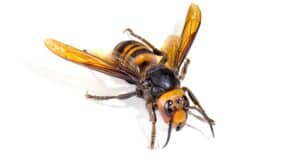Nothing ruins a day outside like an encounter with a yellowjacket. These social stinging insects live in large colonies, and they are known for aggressively defending their nests. In fact, yellowjackets are responsible for the most stings of any bees and wasps. The last thing people want is to find themselves near one of these nests by accident. So, where do yellowjackets nest? Let’s take a closer look.
What Are Yellowjackets?

Yellowjackets are wasps, not bees.
©Ernie Cooper/Shutterstock.com
Yellowjackets are wasps from the genera Vespula and Dolichovespula. That means, no one species is the only yellowjacket. As a result, their looks and behaviors can differ. Typically, they measure about 3/8 to 5/8 an inch long and are known for their black and yellow markings.
Although these wasps can resemble bees due to their similar size and coloration, they are distinct insects. Yellowjackets are social creatures that live in nests that can contain upwards of 3,000 workers at a time depending on several factors.
Several types of yellowjackets thrive in the United States, but they do not all place their nests in the same area.
What Places Do Yellowjackets Nest?
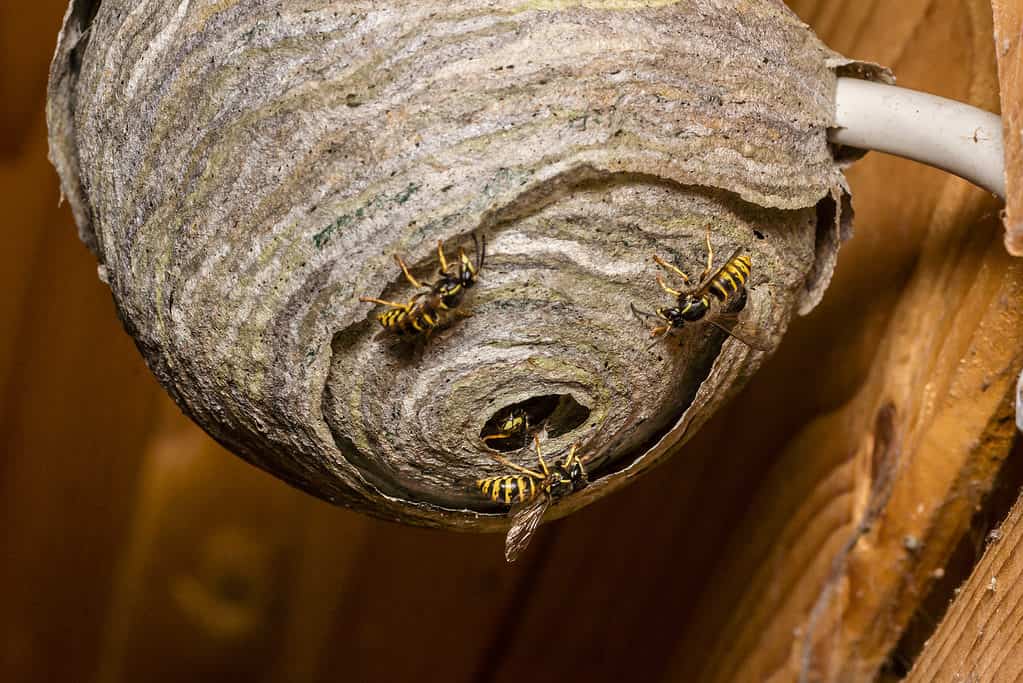
Wasps can build their nests in a variety of locations.
©iStock.com/SKatzenberger
Yellowjackets build their nests in the ground, inside structures, and in aerial locations including bushes, trees, the eaves of manmade structures, and more. The term “yellowjacket” refers to many wasp species, so it’s only natural that there would be a disparity in the way they design their nests.
Considering several common types of yellowjackets will reveal the places where they build their nests.
Eastern Yellowjackets
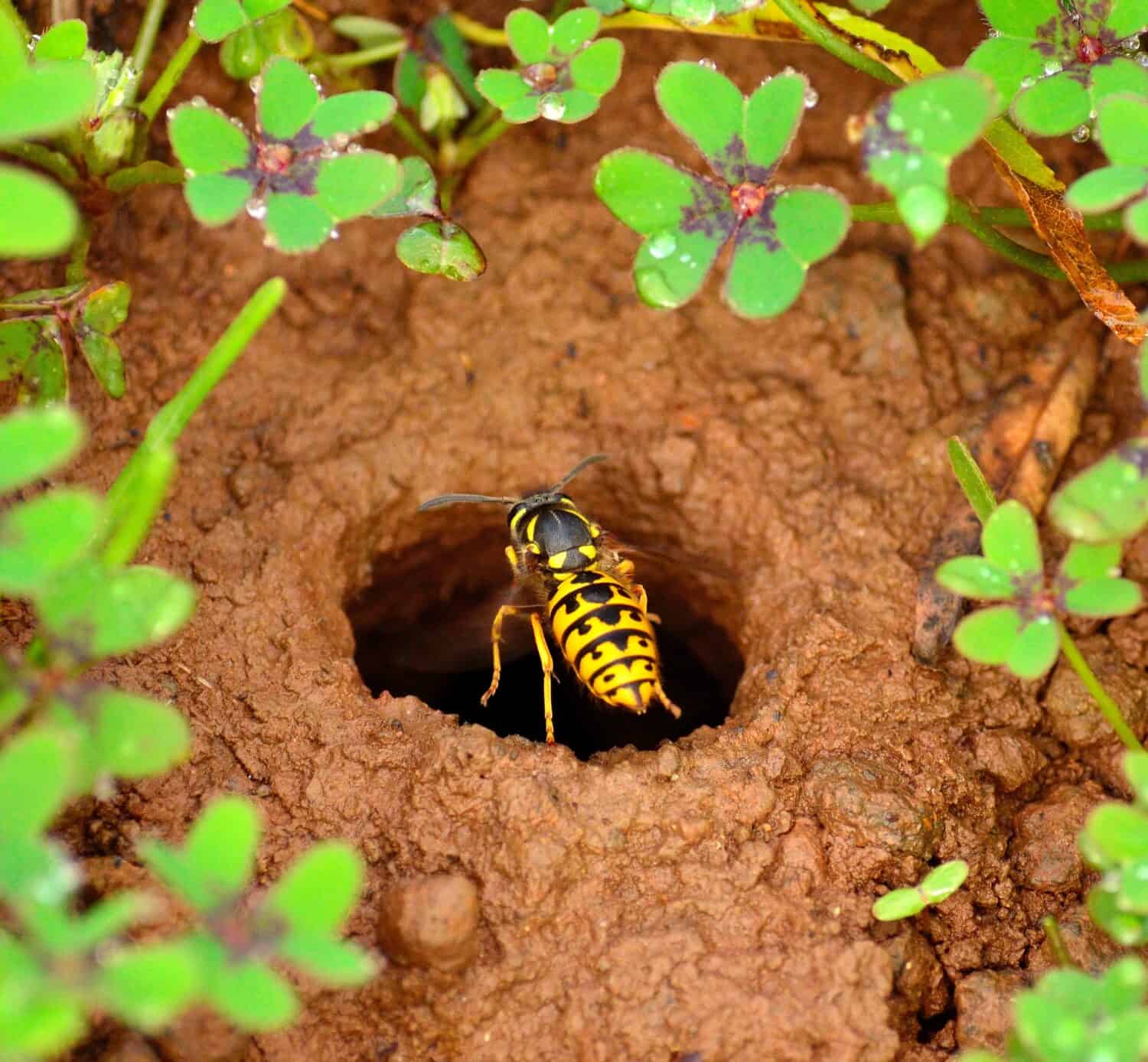
Most eastern yellowjackets build their nests below the ground.
©Pacotoscano/Shutterstock.com
Eastern yellowjackets are one of the most common varieties of these insects in North America. These creatures live in nests that can contain hundreds or even thousands of individuals. These yellowjackets prefer to build subterranean nests. That may be the most troubling answer to the question, where do yellowjackets nest?
These nests can be found in forests, fields, creeks, around tree sumps, and more. They’re often found in parks and residential lawns. However, they can also build their nests inside protected areas, like inside of a home. However, people are far more likely to find them outside than inside.
These wasps are commonly encountered after something disturbs their nests’ entryway. Mowing the lawn, walking on the soil over the structure, or using other motorized equipment that causes vibrations or interferes with the yellowjackets near the entrance can prompt a response from the nest.
These wasps’ widespread distribution in places where people work and play increases the number of interactions between them and humans.
Bald-Faced Hornets

The nests can be as large as a basketball but are shaped more like a football.
©Michael G McKinne/Shutterstock.com
Despite their name, bald-faced hornets are not hornets but wasps. They belong to the species Dolichovespula maculata. Not only are they wasps, but they are another kind of yellowjacket. They have a unique color pattern of black and white instead of black and yellow.
Bald-faced hornets are known for their aerial nests. They like to build their nests in places that are several feet off the ground, usually three feet or higher. They commonly build their nests in places like large, dense bushes, trees, utility poles, and more.
Their nests are known for their football-like shape and a hole near their bottom. These nests are made from a paper-like substance, and they can contain between 100 and 400 workers at their peak.
German Yellowjackets
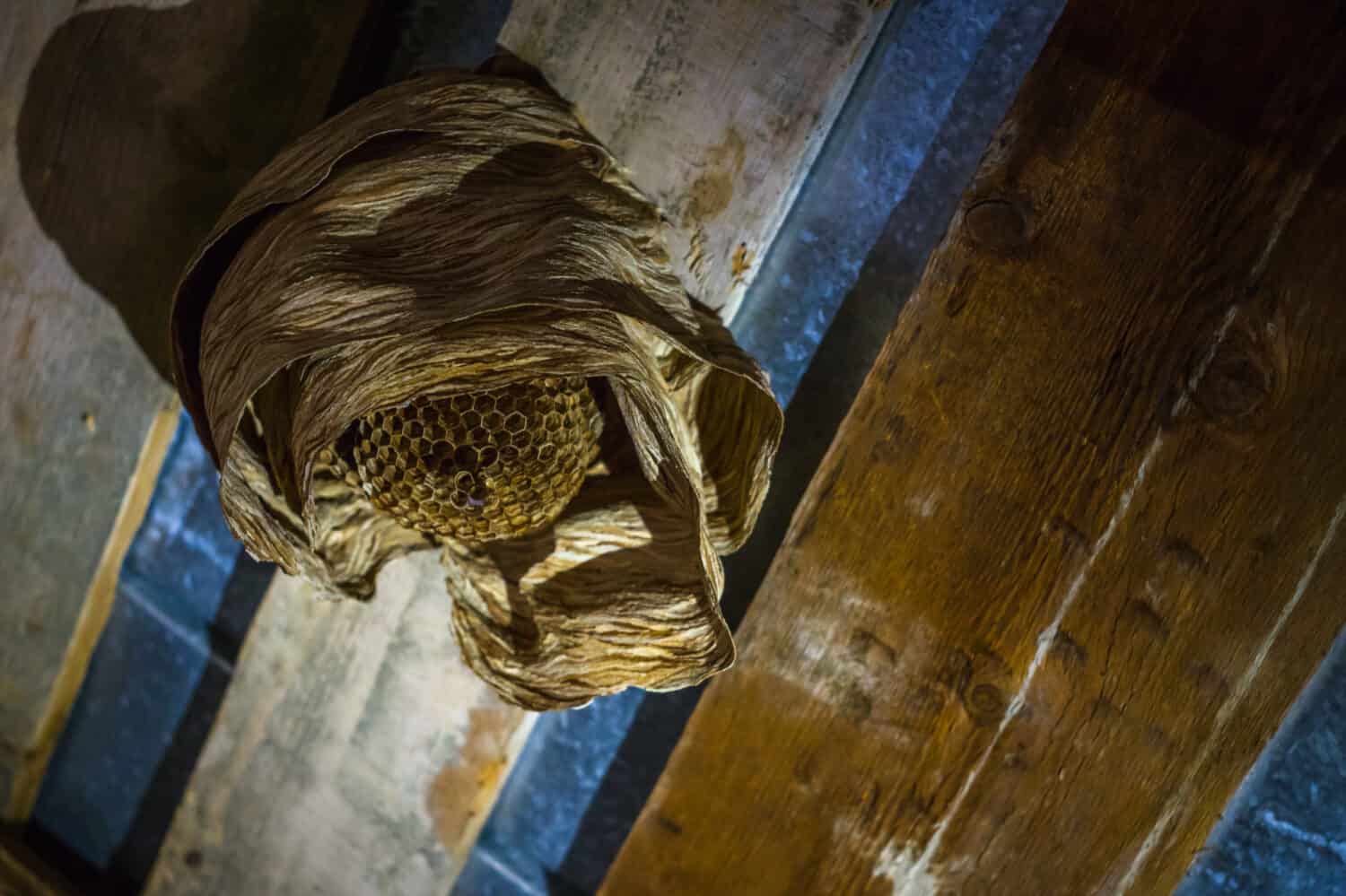
Interior wasp nests can be very hard to spot.
©Josip94/Shutterstock.com
German yellowjackets tend to build their nests inside buildings. They’ll nest in the walls of buildings and attic spaces of homes. That makes them unique compared to other yellowjackets that primarily construct their nests in the ground or aerial spaces outdoors.
Since these nests are often hidden in the recesses of a building, they can go undetected for a long time. When a person finds one of these nests, it’s a good idea to have a professional help them remove it.
Are Yellowjackets Dangerous?
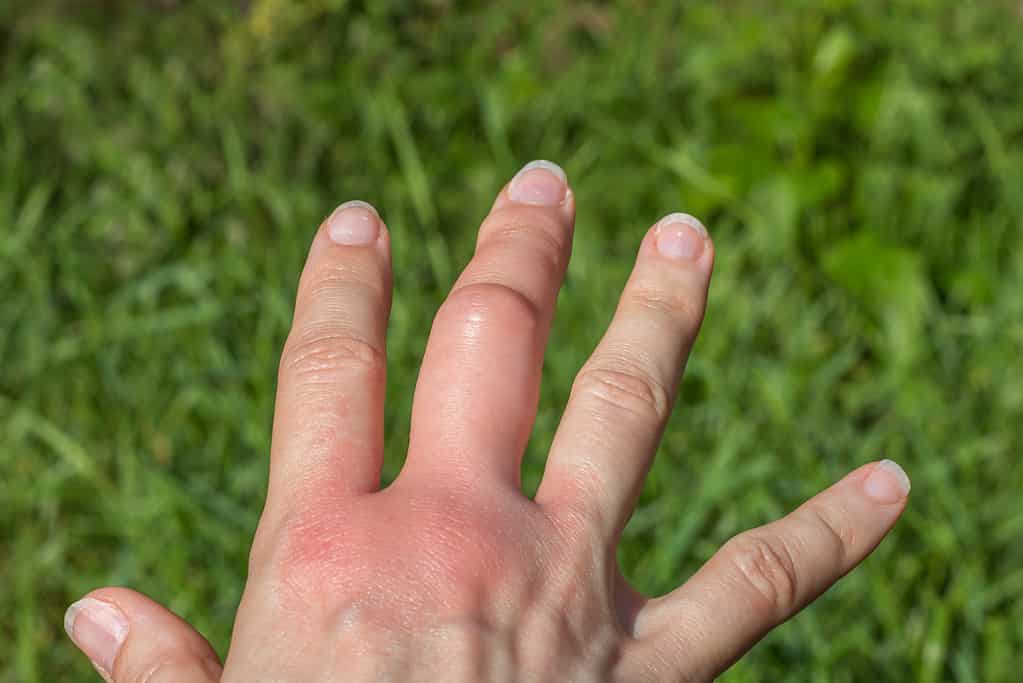
Wasp stings cause pain, swelling, redness, and other symptoms in people with allergies.
©iStock.com/Inna Kozhina
Yes, yellowjackets are dangerous. These insects become aggressive when someone disturbs their nests. When angered, they can repeatedly sting an individual. While a single sting is probably not too much for a person to handle, multiple stings can send someone to the hospital.
An otherwise healthy person can even die if they get stung by enough bees. Also, people that are allergic to these wasps’ venom can die if they are stung by just a few of the creatures.
Aside from their stings and aggression, the most dangerous thing about yellowjackets is that their nests can be hard to see. Oftentimes, the entryway to these wasps’ nests appears as a simple hole in the ground. They’re easy to walk over or use a weedwhacker on top of during the summer. Such events prompt attacks, leading to negative outcomes.
When Are Yellowjackets Most Active?

Soft drinks attract yellowjackets in late summer.
©successo images/Shutterstock.com
Yellowjackets are most active in the late summer and fall months. Not only are they the most active during these months, but they’re most aggressive during these months. By the time late summer rolls around, their food sources start to dwindle. Also, there are far more mouths to feed in their nests.
As a result, the wasps begin a flurry of desperate activity to stay alive through the winter. That means people are more likely to see them buzzing around a can of soda left outside during a barbeque. They’ll try to get into trash cans, too. They need that sugar for energy.
That means it’s smart for people to be on the lookout for these insects during this time of year.
How to Remove a Yellowjacket Nest?
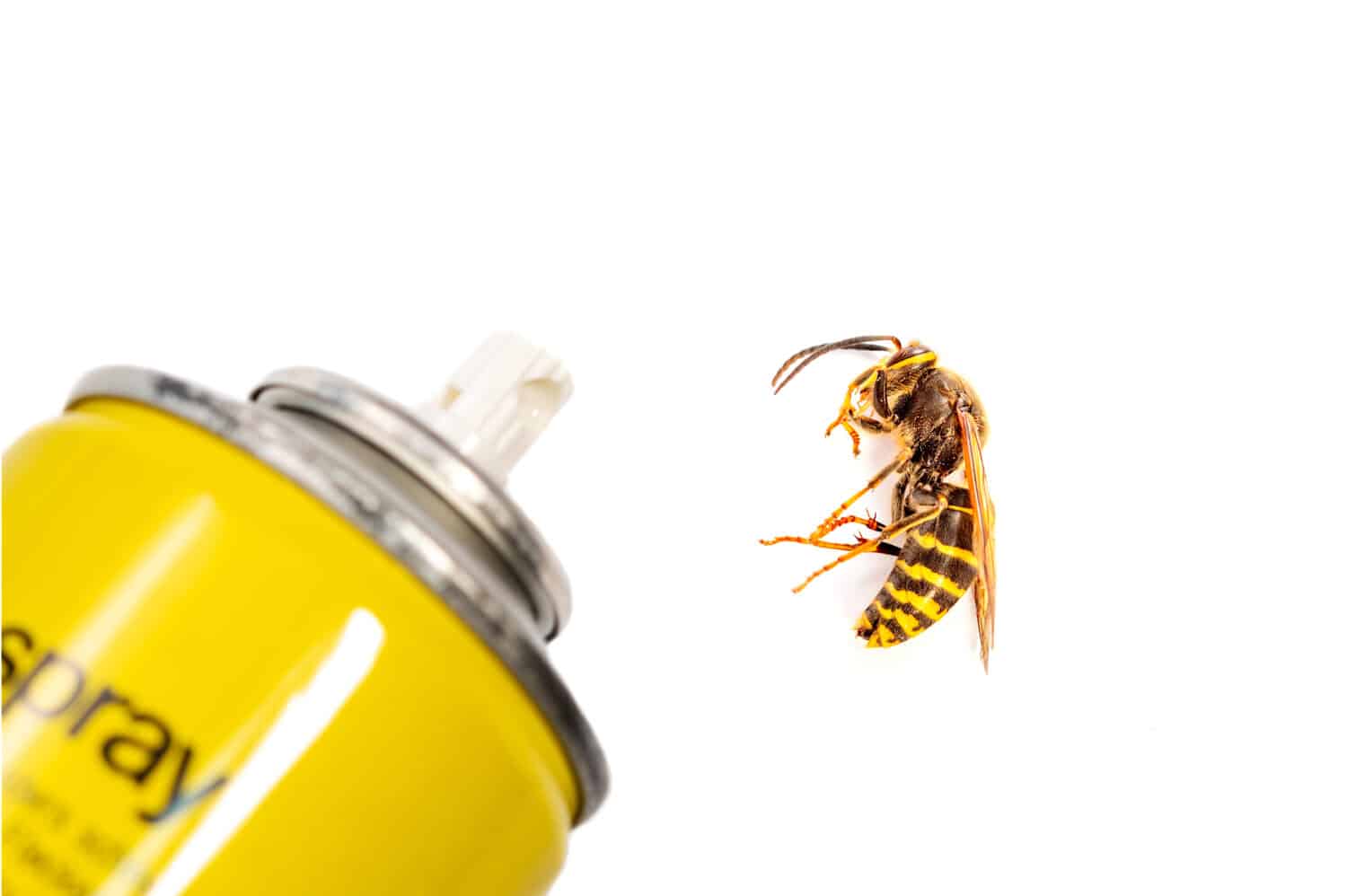
Insecticidal sprays are very effective at killing wasps and emptying their nests.
©Mabeline72/Shutterstock.com
The best way to get rid of a yellowjacket nest depends on the sort of nest a person is dealing with. For example, a small aerial nest is easily disposed of using commercial sprays and careful timing. However, an underground nest requires the use of insecticidal powder applied at the entryway of the nest along with a little patience as they die off.
Yellowjacket nests that are built inside structures are the most difficult to get to. In that case, it’s best to consult a professional. They have the tools and experience to make sure that they get all of the nest and don’t simply make a lot of bees angry inside of a person’s house.
So, where do yellowjackets nest? Well, they nest in a lot of places including below the ground, in trees and bushes, and even inside of homes. They’re pests that range from an annoyance to an outright danger. Knowing how to identify and deal with their nests can save people from painful stings or a night in the emergency room.
The photo featured at the top of this post is © Jim Lambert/Shutterstock.com
Thank you for reading! Have some feedback for us? Contact the AZ Animals editorial team.





